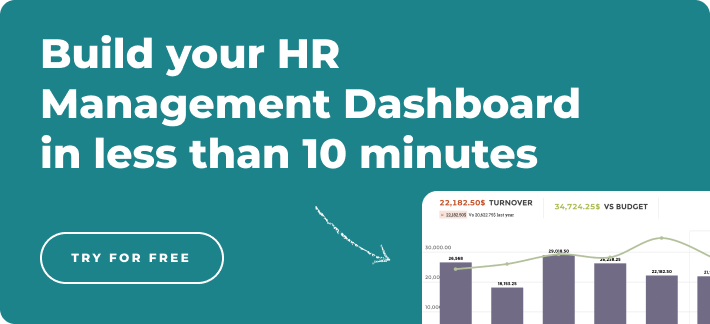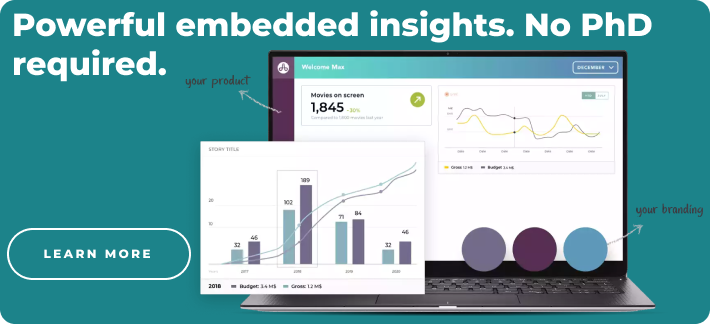Embedded analytics have taken the data world by storm. Not every industry can extract maximum utility from a dashboard, but the world of HR has fallen in love with its benefits. According to a report by LinkedIn, 66% of organizations with more than 10,000 employees have a people analytics team.
While that figure may seem high, the adoption of embedded analytics in HR was lacking. While many firms attempt to invest in embedded analytics solutions, experts found that only 8% of HR departments actually use their data.
Sounds pretty unbelievable right?
A big reason for the current boom in embedded analytics is innovation. While many HR solutions required firms to adopt a static, limited model, newer cloud-based solutions have delivered the features necessary for adoption. Instead of operating dashboards from one workstation, HR professionals can now delegate the construction of dashboards through collaboration and provide instant insights to their teams.
The rise of cloud-based embedded analytics platforms has inevitably increased adoption. According to Sierra-Cedar, 45% of large companies and 51% of midsized companies are increasing their spending on HR technology and analytics.
HR departments are currently facing issues in the market, with shortages of qualified workers and high turnover plaguing many organizations. Dashboards that are constructed using best practices can be one of the largest assets for any HR department.
Benefits of HR Dashboards
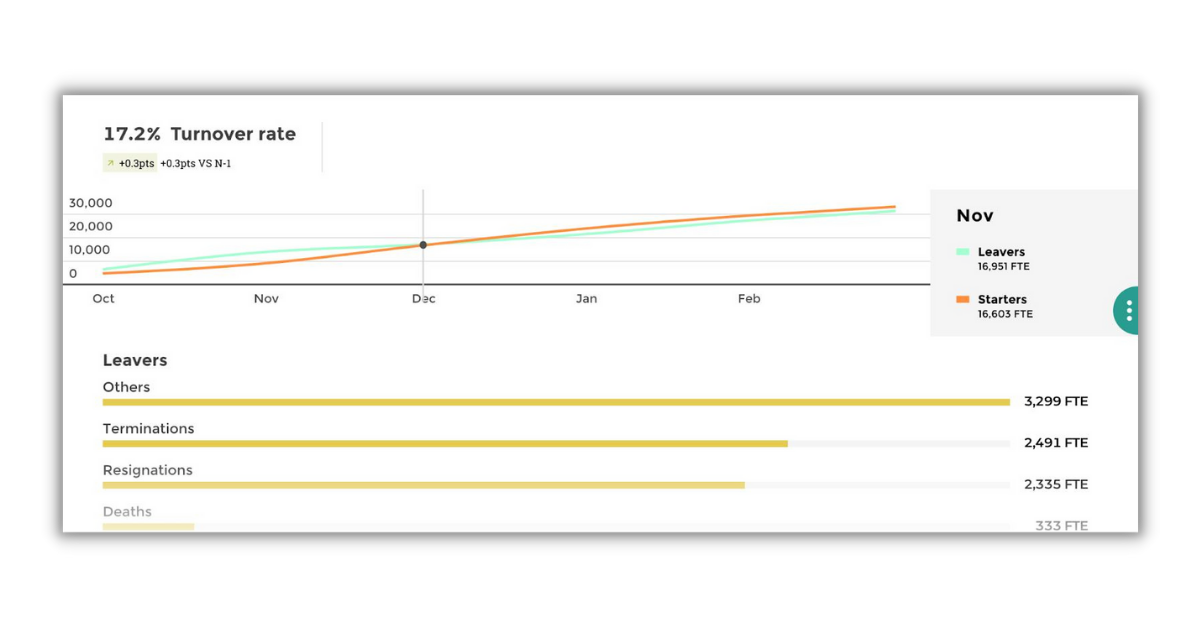
Innovation in embedded analytics provides the following benefits to adopters who build their dashboards using best practices:
- Increased Workforce Monitoring
By utilizing KPIs such as employee productivity, cost per hire, absenteeism rate, and training costs, HR departments can build dashboards to track employee performance in real-time. By constructing dashboards, HR professionals can effectively identify key issues and track emerging trends. - Automated Reporting
HR reporting is a key aspect of the department's operations. With an automated reporting tool, professionals have access to all of their data in one place, allowing them to instantly generate reports. - Enhanced Communication
Embedded analytics tools provide robust collaboration capabilities. For example, Toucan's collaboration capabilities include shared annotations and comments sections that are instantly shared between users. - Versatility
The era of the stationary workstation is officially over. Due to the cloud-based technology of modern embedded analytics tools, HR professionals are not limited to a single room. Mobile optimization, collaborative capabilities, and data security allow users to work from wherever they may be located. - Increased Transparency
How often do we hear the phrase "I didn't know that was the case," or "I would've made a different decision if I had access to the same insights." Robust dashboards eliminate all excuses involving communication between decision-makers. By democratizing data to all members of a department, all members of the team are viewing the same datasets, increasing ownership and accountability.
These benefits are driving the success of data-oriented HR professionals across the globe. However, not all professionals may experience the maximum benefits if the dashboard construction process is not followed.
HR Dashboard Use Cases and KPIs
Selecting the relevant KPIs is a crucial aspect of dashboard adoption, depending on the goal of each visualization. Here are some examples of HR dashboards and the KPIs they include.
Executive HR Dashboard
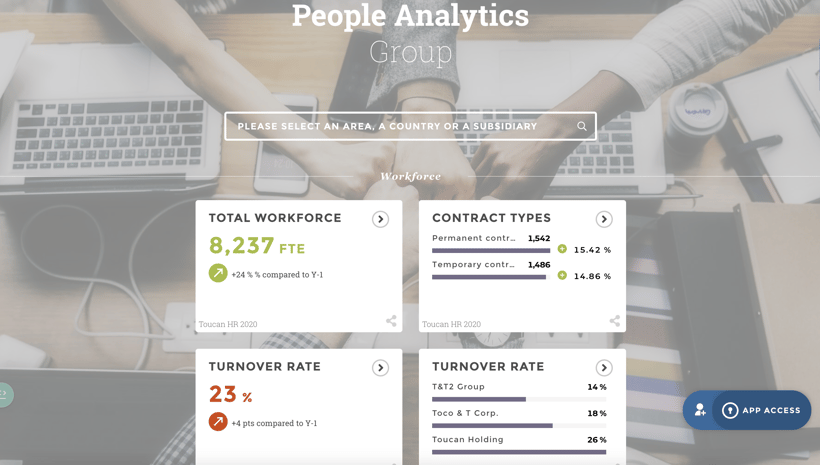
HR executives stand to benefit the most from dashboards. Because of the sheer amount of data they must consider, having essential KPIs in one place can drastically increase insights and decision-making efficiency
Some KPIs to include in an Executive HR Dashboard include:
- Number of employees
- Total salaries
- Employee Satisfaction Ratio
- New Hires and Terminations
- Completed Training Ratio
- Diversity Metrics
Arranging these metrics in an organized matter allows executives to move swiftly when dissecting trends and diagnosing the reasons for problems in the workplace.
Employee Performance Dashboard
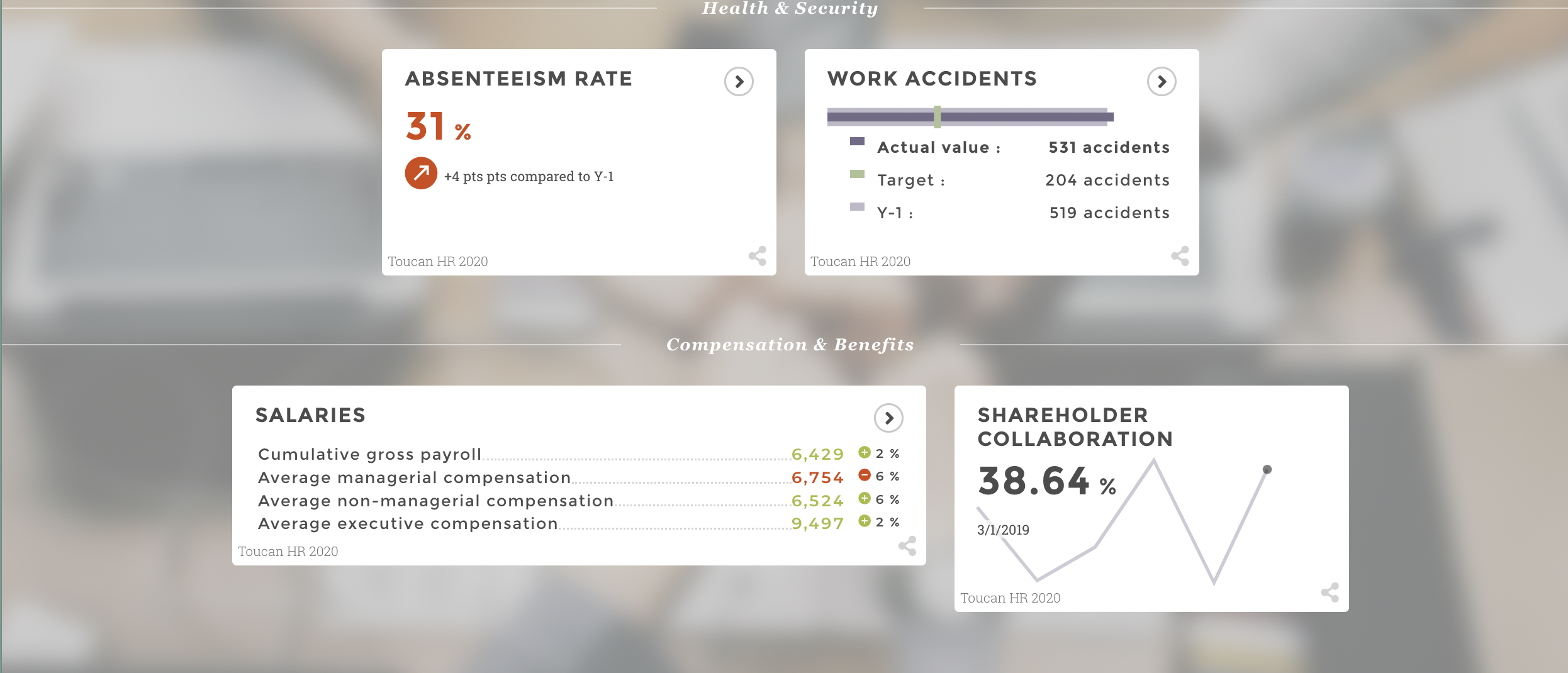
Creating an Employee Performance Dashboard allows HR departments to seamlessly view the effectiveness of their workforce. Many HR departments utilize a rating system to determine an employee's contributions with respect to salary.
Some KPIs to include in an Employee Performance Dashboard include:
- Active Employees by Rating
- Total/Average Salary by Employee Rating
- Employee Details
- % of Employees Working Overtime per Week
By having an overview of these metrics, HR professionals can find correlations between performance trends and work to incentivize their workforce or make the necessary adjustments to excise outliers.
Employee Development Dashboard
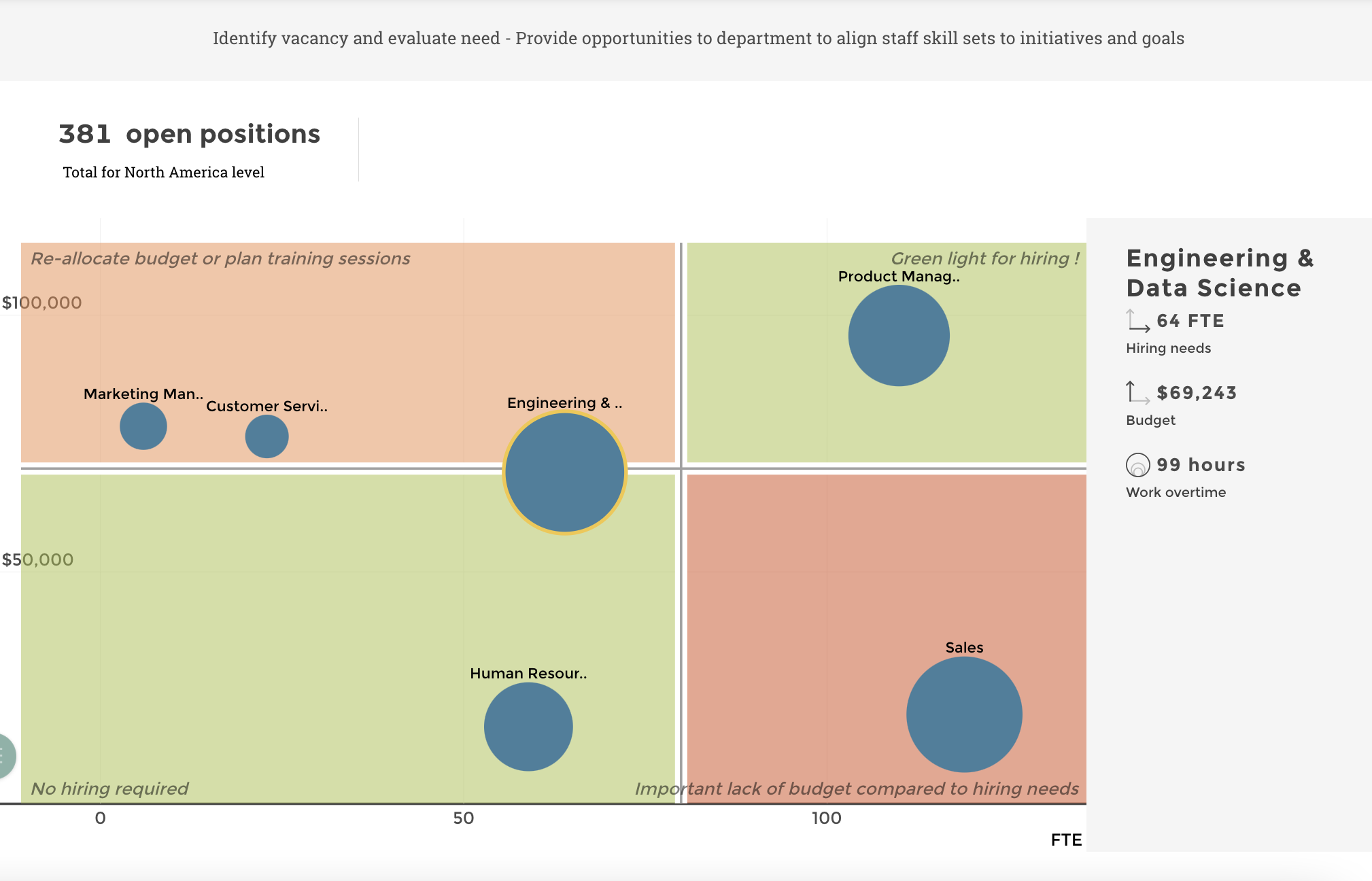
Employee training is at the forefront of HR strategy in every industry. While performance is important, employees must be given the appropriate training to develop. The largest asset to any corporation is its workforce and having a dashboard that updates these statistics is vital to protecting that asset.
Some KPIs to include in an Employee Performance Dashboard include:
- Program Completion
- Training Progress by Department
- Training Progress by Program
- Training Hours
- Training Costs
Training programs are the backbone of any successful firm, and visualizing real-time program data allows HR professionals to tweak ineffective training programs and view deficiencies in training strategy.
Workforce Diversity Dashboard

ESG initiatives have gained momentum, especially in the world of human resources. Workforce diversity programs are implemented at nearly every firm, and tracking diversity metrics allows firms to report their efforts to diversify the workforce.
Some KPIs to include in an Employee Performance Dashboard include:
- Number of Employees by Ethnicity
- Employees by Ethnic Group and Country
- Average Salary by Country and Ethnicity
- % of Employees by Ethnic Group
Workforce Diversity Dashboards will only gain popularity as ESG metrics continue to exponentially increase. With many governments looking to mandate diversity metrics in the coming years, visualizing workforce diversity can help HR professionals get ahead of the competition.
HR Dashboard Tips
Creating a dashboard may look like a trivial and easy task at first glance, but the process of creating a data story is a process that involves brainstorming, planning, design, and maintenance. Here are some tips to ensure that your HR dashboard is an impactful tool rather than a meaningless investment:
- What are your questions?
Your data stories should answer a crucial question. For example "Why is my employee turnover abnormally high?" By giving your dashboard a specific purpose, you will be more inclined to narrow down the correct KPIs to answer your question and tell your HR story. - Keep it concise yet informative
Yes, we know: concise and informative aren't the easiest pairing to execute. But in dashboard creation, this combination is essential, since a cluttered and confusing dashboard is a recipe for disaster. Limiting your visualizations to 4-6 KPIs is the sweet spot for easily identifying trends and weaknesses. - Iterate, iterate, and iterate
After you craft your first dashboard that gains approval, it may be tempting to celebrate and call it a day. However, a feedback loop with end users is essential to the success of your project. Ensure that your end users find the data story useful and effective. Closing yourself to feedback will cause frustration and lower adoption rates.
These are just a few tips when creating your HR dashboard. For a more detailed guide on the dashboard process, learn more by reading our dashboard series, which covers every stage of dashboard creation and deployment.
The HR Dashboard Solution
When choosing a solution, IT and data departments give HR professionals the comparisons of each tool and the recommendation. While most tools can satisfy the general expectations of data teams, tools like collaboration and dedicated mobile optimization are necessary tools for HR decision-makers.
As a tool used by many HR departments, Toucan delivers on its promise to construct a story with your data, allowing your firm to be one of the 8% group that has access to usable data.
Getting your team on board when investing in an HR dashboard tool is the difference between success and money down the drain. By choosing a dashboard solution that makes your workforce data look less intimidating, HR professionals will be much better equipped to transmit insights to their team.


